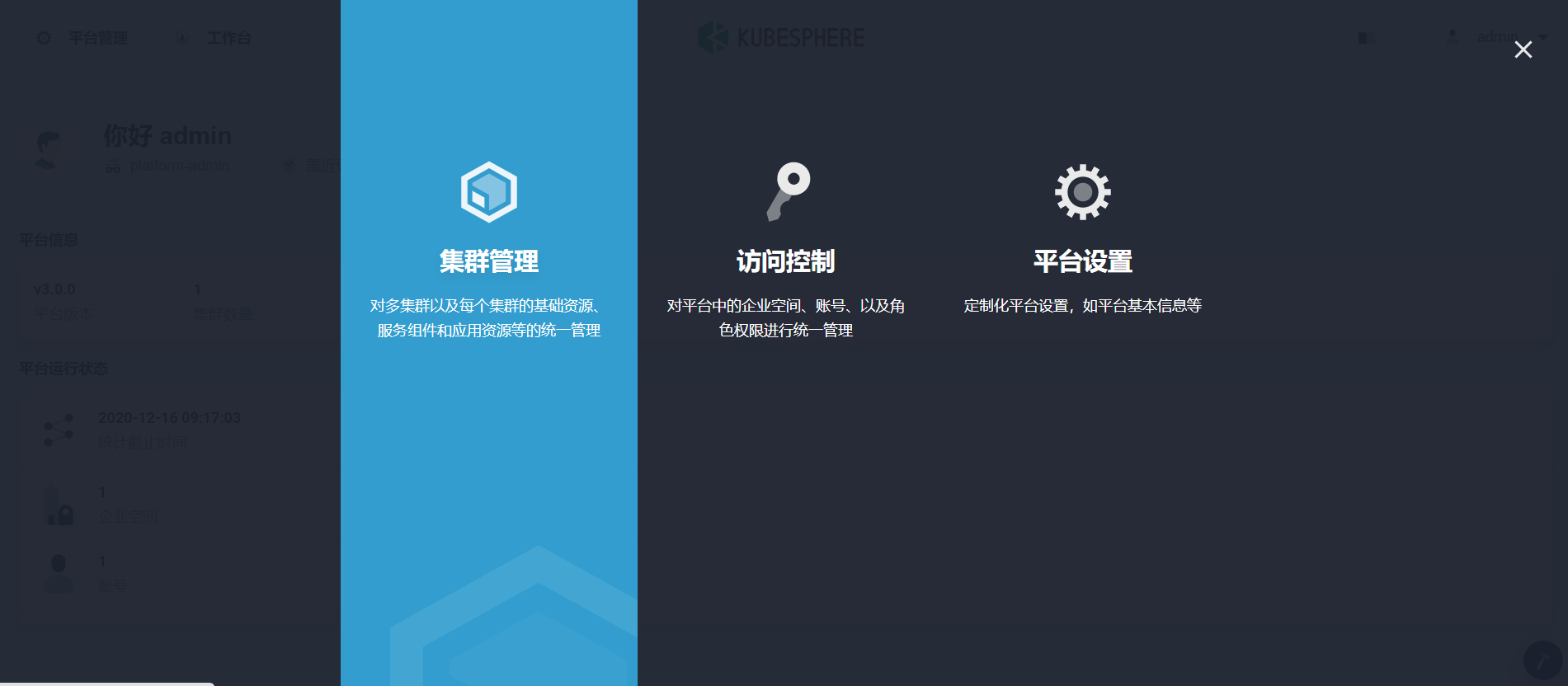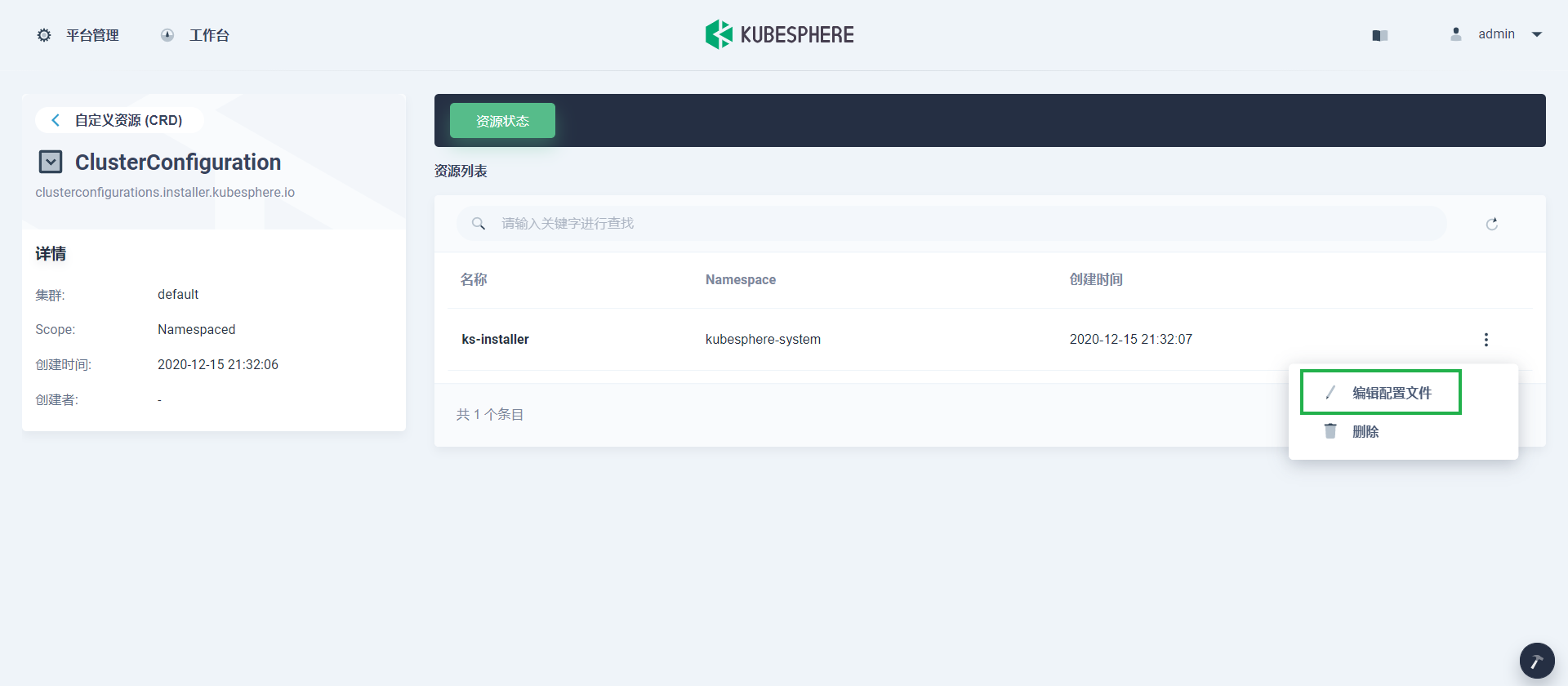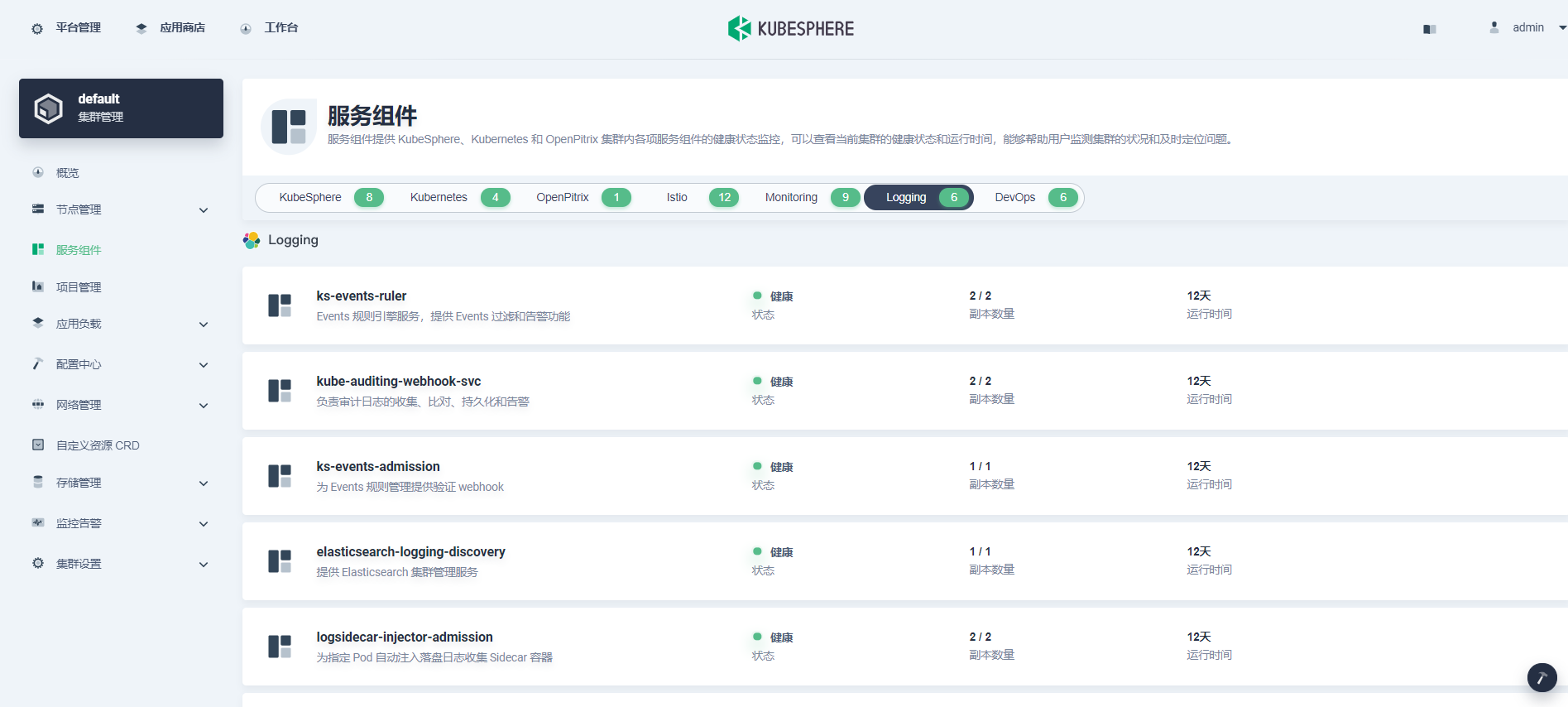
KubeSphere 事件系统
什么是 KubeSphere 事件系统
KubeSphere 事件系统使用户能够跟踪集群内部发生的事件,例如节点调度状态和镜像拉取结果。这些事件会被准确记录下来,并在 Web 控制台中显示具体的原因、状态和信息。要查询事件,用户可以快速启动 Web 工具箱,在搜索栏中输入相关信息,并有不同的过滤器(如关键字和项目)可供选择。事件也可以归档到第三方工具,例如 Elasticsearch、Kafka 或 Fluentd。
有关更多信息,请参见事件查询。
在安装前启用事件系统
在 Linux 上安装
当您在 Linux 上安装多节点 KubeSphere 时,需要创建一个配置文件,该文件列出了所有 KubeSphere 组件。
-
基于在 Linux 上安装 KubeSphere 的教程,您需要创建一个默认文件
config-sample.yaml。通过执行以下命令修改该文件:vi config-sample.yaml备注
如果您采用 All-in-One 安装,则不需要创建config-sample.yaml文件,因为可以直接创建集群。一般来说,All-in-One 模式是为那些刚接触 KubeSphere 并希望熟悉系统的用户而准备的。如果您想在该模式下启用事件系统(例如用于测试),请参考下面的部分,查看如何在安装后启用事件系统。 -
在该文件中,搜寻到
events,并将enabled的false改为true。完成后保存文件。events: enabled: true # Change "false" to "true"备注
默认情况下,如果启用了事件系统,KubeKey 将安装内置 Elasticsearch。对于生产环境,如果您想启用事件系统,强烈建议在config-sample.yaml中设置以下值,尤其是externalElasticsearchUrl和externalElasticsearchPort。在安装前提供以下信息后,KubeKey 将直接对接您的外部 Elasticsearch,不再安装内置 Elasticsearch。es: # Storage backend for logging, tracing, events and auditing. elasticsearchMasterReplicas: 1 # total number of master nodes, it's not allowed to use even number elasticsearchDataReplicas: 1 # total number of data nodes elasticsearchMasterVolumeSize: 4Gi # Volume size of Elasticsearch master nodes elasticsearchDataVolumeSize: 20Gi # Volume size of Elasticsearch data nodes logMaxAge: 7 # Log retention time in built-in Elasticsearch, it is 7 days by default. elkPrefix: logstash # The string making up index names. The index name will be formatted as ks-<elk_prefix>-log externalElasticsearchUrl: # The URL of external Elasticsearch externalElasticsearchPort: # The port of external Elasticsearch -
使用配置文件创建集群:
./kk create cluster -f config-sample.yaml
在 Kubernetes 上安装
在 Kubernetes 上安装 KubeSphere 的过程与教程在 Kubernetes 上安装 KubeSphere 中的说明大致相同,不同之处是需要先在 cluster-configuration.yaml 文件中启用事件系统(可选组件)。
-
下载 cluster-configuration.yaml 文件,然后打开并开始编辑。
vi cluster-configuration.yaml -
在该本地
cluster-configuration.yaml文件中,搜寻到events,并将enabled的false改为true,启用事件系统。完成后保存文件。events: enabled: true # Change "false" to "true"备注
对于生产环境,如果您想启用事件系统,强烈建议在cluster-configuration.yaml中设置以下值,尤其是externalElasticsearchUrl和externalElasticsearchPort。在安装前提供以下信息后,ks-installer 将直接对接您的外部 Elasticsearch,不再安装内置 Elasticsearch。es: # Storage backend for logging, tracing, events and auditing. elasticsearchMasterReplicas: 1 # total number of master nodes, it's not allowed to use even number elasticsearchDataReplicas: 1 # total number of data nodes elasticsearchMasterVolumeSize: 4Gi # Volume size of Elasticsearch master nodes elasticsearchDataVolumeSize: 20Gi # Volume size of Elasticsearch data nodes logMaxAge: 7 # Log retention time in built-in Elasticsearch, it is 7 days by default. elkPrefix: logstash # The string making up index names. The index name will be formatted as ks-<elk_prefix>-log externalElasticsearchUrl: # The URL of external Elasticsearch externalElasticsearchPort: # The port of external Elasticsearch -
执行以下命令开始安装:
kubectl apply -f https://github.com/kubesphere/ks-installer/releases/download/v3.0.0/kubesphere-installer.yaml kubectl apply -f cluster-configuration.yaml
在安装后启用事件系统
-
以
admin身份登录控制台。点击左上角的平台管理,选择集群管理。
-
点击自定义资源 CRD,在搜索栏中输入
clusterconfiguration。点击结果查看其详细页面。信息
自定义资源定义 (CRD) 允许用户在不新增 API 服务器的情况下创建一种新的资源类型,用户可以像使用其他 Kubernetes 原生对象一样使用这些自定义资源。 -
在资源列表中,点击
ks-installer右边的三个点,选择编辑配置文件。 -
在该 YAML 文件中,搜寻到
events,将enabled的false改为true。完成后,点击右下角的更新,保存配置。events: enabled: true # Change "false" to "true"备注
默认情况下,如果启用了事件系统,将会安装内置 Elasticsearch。对于生产环境,如果您想启用事件系统,强烈建议在该 YAML 文件中设置以下值,尤其是externalElasticsearchUrl和externalElasticsearchPort。在文件中提供以下信息后,KubeSphere 将直接对接您的外部 Elasticsearch,不再安装内置 Elasticsearch。es: # Storage backend for logging, tracing, events and auditing. elasticsearchMasterReplicas: 1 # total number of master nodes, it's not allowed to use even number elasticsearchDataReplicas: 1 # total number of data nodes elasticsearchMasterVolumeSize: 4Gi # Volume size of Elasticsearch master nodes elasticsearchDataVolumeSize: 20Gi # Volume size of Elasticsearch data nodes logMaxAge: 7 # Log retention time in built-in Elasticsearch, it is 7 days by default. elkPrefix: logstash # The string making up index names. The index name will be formatted as ks-<elk_prefix>-log externalElasticsearchUrl: # The URL of external Elasticsearch externalElasticsearchPort: # The port of external Elasticsearch -
您可以使用 Web Kubectl 工具执行以下命令来检查安装过程:
kubectl logs -n kubesphere-system $(kubectl get pod -n kubesphere-system -l app=ks-install -o jsonpath='{.items[0].metadata.name}') -f提示
您可以通过点击控制台右下角的锤子图标找到 Web Kubectl 工具。
验证组件的安装
如果您同时启用了日志系统和事件系统,可以在服务组件的 Logging 中查看事件系统状态。您可以看到如下图所示界面:
如果只启用事件系统而不安装日志系统,则无法看到上图所示界面,因为不会显示 Logging 按钮。
执行以下命令来检查 Pod 的状态:
kubectl get pod -n kubesphere-logging-system
如果组件运行成功,输出结果如下:
NAME READY STATUS RESTARTS AGE
elasticsearch-logging-data-0 1/1 Running 0 11m
elasticsearch-logging-data-1 1/1 Running 0 6m48s
elasticsearch-logging-discovery-0 1/1 Running 0 11m
fluent-bit-ljlsl 1/1 Running 0 6m30s
fluentbit-operator-5bf7687b88-85vxv 1/1 Running 0 11m
ks-events-exporter-5cb959c74b-rc4lm 2/2 Running 0 7m1s
ks-events-operator-7d46fcccc9-8vvsh 1/1 Running 0 10m
ks-events-ruler-97f756879-lg65t 2/2 Running 0 7m1s
ks-events-ruler-97f756879-ptbkr 2/2 Running 0 7m1s















 上一篇
上一篇
